In the case of saxophone finishes, not all that glitters is gold. Buyers and sellers often mistake lacquer for gold plate, but Perma-gold looks even more like gold. Perma-what? It’s a dichromate mineral-based coating that typically goes over a metal like zinc, or possibly nickel. This short post will help you to identify them. Here’s my permagold SML tenor:
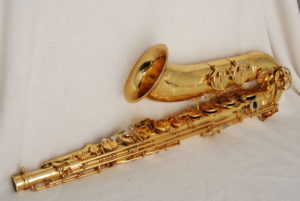
Perma-Gold is mostly a curiosity, but it is important when buying a vintage SML (Strasser Marigaux Lemaire) saxophone. There may also be perma-gold Selmers, because there are vintage Selmers (Modele 26-era) whose finish is marked PG in the log books. Who knows? Let me know in the comments if you happen to own one!
Permagold looks a lot like gold – so much so that it has been banned in some countries for use in jewelry! So one can hardly fault sellers of permagold-plated SML saxophones for selling their horns as gold-plated.
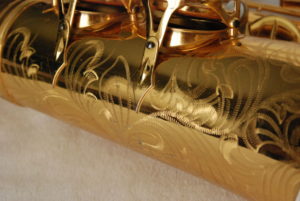
To complicate matters, since gold plate is usually applied over silver plate on saxophones, and silver looks a lot like zinc, even partially worn-off permagold still looks superficially like worn gold plate. But if you are in the market for a nice SML, here is how to tell the difference.
1. Every permagold SML so far has shown a distinctive flaky pattern to the wear. I suspect that this is because dichromate is a mineral, so it flakes off in little chips, whereas gold wears off like metals do, rubbing uniformly thinner on touch points until the silver underneath starts to show through gradually. It also burns off like lacquer, but is even more fragile. Check out the neck tenon burn mark on my SML tenor.
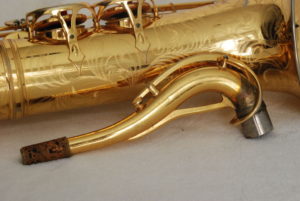
3. Every single supposedly gold-plated SML that I have seen, has actually been permagold, so if you see a gold plated SML, it probably isn’t. Sellers mostly know this by now, so it is more rare to see one advertised as gold plate now than it was several years ago.
4. Permagold doesn’t tarnish like gold, so it tends to look a bit too good on the parts where it is present. It can get grimy, but it doesn’t look black in the nooks and crannies the way a typical old gold-plated horn does. Here’s Perma-gold next to Lacquered brass for comparison.
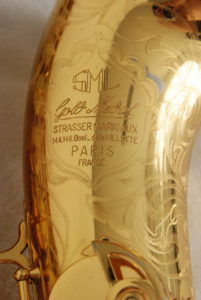
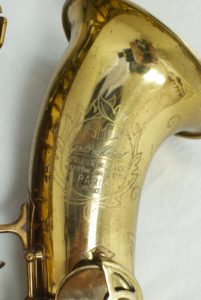
One bit of information could also be corrected. There is a very informative article on SML history that says that SML only used permagold on its “standard” models, but I have found that they used it on their top-model, “Rev D” and Gold Medal models just as often as on horns stamped “standard,” or even more often.
Here are some photos to help you to identify perma-gold. Note the flaky way that the finish wears off.
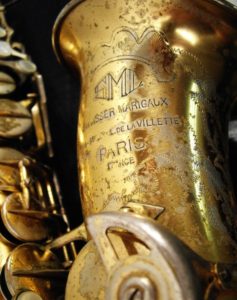
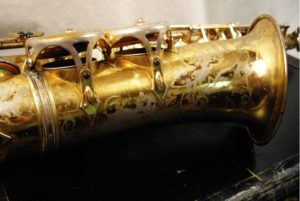
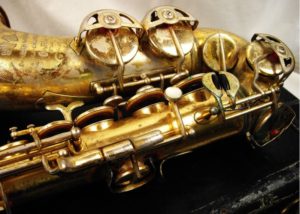
See also, Matt Stohrer’s excellent video on this topic:

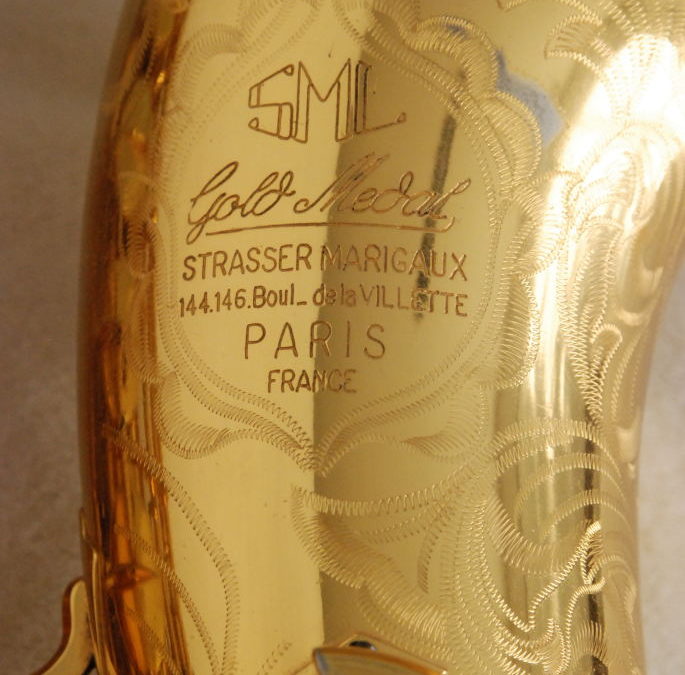
Bummer about the burned neck, but man what a beautiful horn.
No kidding. Maybe I should get the neck tenon area gold plated to match. Then at least a little of the horn will finally be gold.
Eccellente
I own a euro engraved Selmer mark vi alto 123xxx with perma gold finish as well. Apparently, this was used on some of the European engraved horns in the mid 60’s.
Can you email me a photo of that? I would love to add it to this article.
Just got a Perma-Gold Selmer in! https://www.getasax.com/product/selmer-super-sax-baritone-unique-original-permagold-18xxx/
and a beautiful Perma-Gold SML tenor also https://www.getasax.com/product/sml-rev-d-gold-medal-tenor-11660-original-permagold/